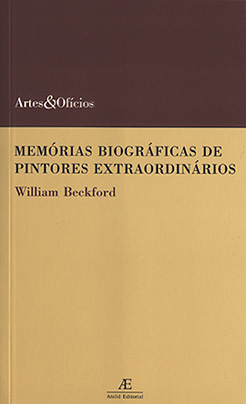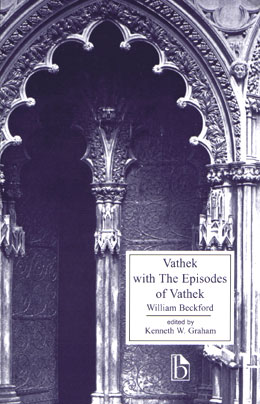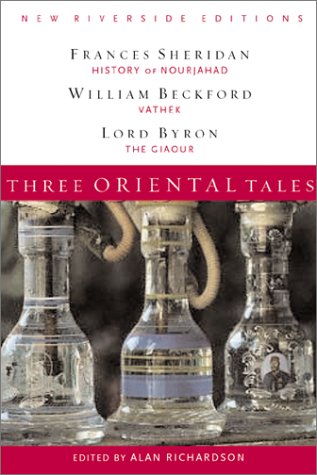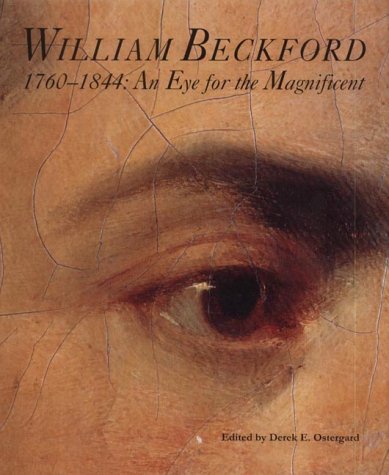BECKFORDIANA ::: BOOKS PUBLISHEDThis page aims to provide a guide to publications relating to Beckford; newly published editions of his works (in all languages), books about him and books in which his life or works figures in one way or another.
The keeper of this site is gratfeul for any suggestions or additions to this page. Please direct e-mails to Dick Claésson and regular post to:
Dick Claésson
Tideräkningsgatan 36
SE 415 10 Göteborg
Sweden

MEMÓRIAS BIOGRÁFICAS DE PINTORES EXTRAORDINÁRIOS
This, the first Portuguese translation of Beckford's debut work, is here briefly described by the translator, Paulo Mugayar Kühl:
"William Beckford is not very well known in Brazil. A Portuguese translation of Vathek was published in 1997 and his Journals and his Recollections of an Excursion to the Monastaries of Alcobaça and Batalha were only published in Portugal. This translation of his Biographical Memoirs of Extraordinary Painters will help Brazilian readers to know better the work of this ironic and creative author."
ISBN: 85-7480-041-4 (published in 2001), 106 pp.
VATHEK WITH THE EPISODES OF VATHEK
Edited by Kenneth W. Graham.
From the publisher's website: "This Orientalist novel is subtitled An Arabian Tale, a very suitable subtitle considering the ways in which the author, William Beckford, mixes the foreign with the supernatural. Vathek is both The Caliph (a Muslim religious and civic leader) and the son of the previous Caliph and a Greek sorceress. His desire for forbidden knowledge leads him, Faust-like, to join in league with the devil. The tale follows him through his misdeeds and travels, including into the underworld, before his realization – all too late – of the vanity of his worldliness.
The youthful and audacious William Beckford extended Vathek’s irreverence and decadence into The Episodes of Vathek, and an edition that unites the two has long been overdue. This is all the more so with Kenneth Graham’s recent discovery of an early version of the first Episode that centres on male-male love. With the Broadview edition, this version is now in print for the first time, along with the previously published version that had been re-written as a heterosexual narrative. This edition of Vathek also introduces The Episodes in the order Beckford planned and incorporates Beckford’s final corrections.
Vathek was first written in French and then published in English amidst a dispute over the translation. The text of the Broadview edition of Vathek is based on the last edition corrected by the author, an edition prepared much later (1823) than the work’s original entrance into the English language. The text of The Episodes of Vathek is derived partly from the translation prepared by Sir Frank T. Marzials for the first published edition of 1912 and partly from manuscript discovered and translated by the editor."
ISBN: 1-55111-281-7
This book can be ordered here, or through e-mail at books@tlyster.co.uk

THREE ORIENTAL TALES:
Frances Sheridan, History of Nourjahad
William Beckford, Vathek
and Lord Byron, The Giaour
Edited by Alan Richardson
The three major texts here gathered together for the first time, Frances Sheridan's History of Nourjahad, William Beckford's Vathek, and Lord Byron's The Giaour, exemplify three equally significant facets of literary Orientalism in the British tradition. Nourjahad, published posthumously in 1767, illustrates the popular appeal of Oriental tales for an audience that sought variety and even exotic escapism within the confines of "moral" fiction. Simultaneously, it reveals how a woman writer could make use of Orientalist motifs and settings to subtly underscore the limitations of the female social sphere and to reimagine the harem as a locus of female empowerment. Vathek (1786) remains unparalleled as the most powerful, inventive, and disturbing fantasy in the British Orientalist tradition. Championed and reinterpreted by poets of the English Romantic and French Symbolist movements, most notably Byron and Mallarmé, Vathek remains a pivotal text for understanding both the Gothic tradition and the transition from neoclassical to Romantic literary modes. The publication of The Giaour in 1813 sealed Byron's reputation as the leading British poet of his generation while establishing the verse "Eastern Tale" as the popular successor to the Orientalist prose tradition culminating in Vathek. Together, these three tales illustrate the recurring thematic and ideological concerns as well as the considerable range of the Oriental tale, a range further evidenced by the selections from The Spectator, The Rambler, Oliver Goldsmith's Citizen of the World, and Maria Edgeworth's Popular Tales in Part II of this volume.Click here for more info on this anthology.

WILLIAM BECKFORD, 1760-1844. AN EYE FOR THE MAGNIFICENT (ed. Derek Ostergard)Description of the book culled from Amazon.co.uk:
"The British collector William Beckford helped to define many of the most significant parameters of nineteenth-century collecting, as he was unbound by conventional intellectual or aesthetic prejudice. He was among the first of the great connoisseurs to collect Asian and Islamic art while breaking with the taste of his contemporaries. He assembled an eclectic and luxurious collection that included ancient, medieval, and Renaissance art, as well as seventeenth-, eighteenth-, and early-nineteenth-century objects. His active participation in the design of various objects reveals a discriminating aesthetic sensibility that set him apart from his contemporaries. His influence also extended beyond his day: generations of renowned private collectors in Great Britain, on the Continent, and in the United States have reflected his interest in the art of many cultures and periods.
This magnificent book describes Beckford's flamboyant personality and unconventional life. Authorities tell us that at an early age, Beckford was known as "England's wealthiest son", due to a prodigal income generated from Jamaican sugar plantations. As a youth, he travelled widely and made his mark as a novelist, composer of music, and impresario of design. His most ambitious project was his fantastic residence Fonthill Abbey; the construction and furnishing of this Gothic Revival edifice consumed nearly twenty-five years of Beckford's life and vast amounts of his fortune, branding him with a reputation as a recluse and eccentric.
In addition to providing details about Beckford's life, the book discusses 175 of the finest works of art that once were part of Beckford's legendary collections and examines his travels and great building projects.
This richly illustrated book is the catalogue for an exhibition at the Bard Graduate Center for Studies in the Decorative Arts, Design and Culture from October 2001 to January 2002 and at the Dulwich Picture Gallery, London, from February to April 2002."
